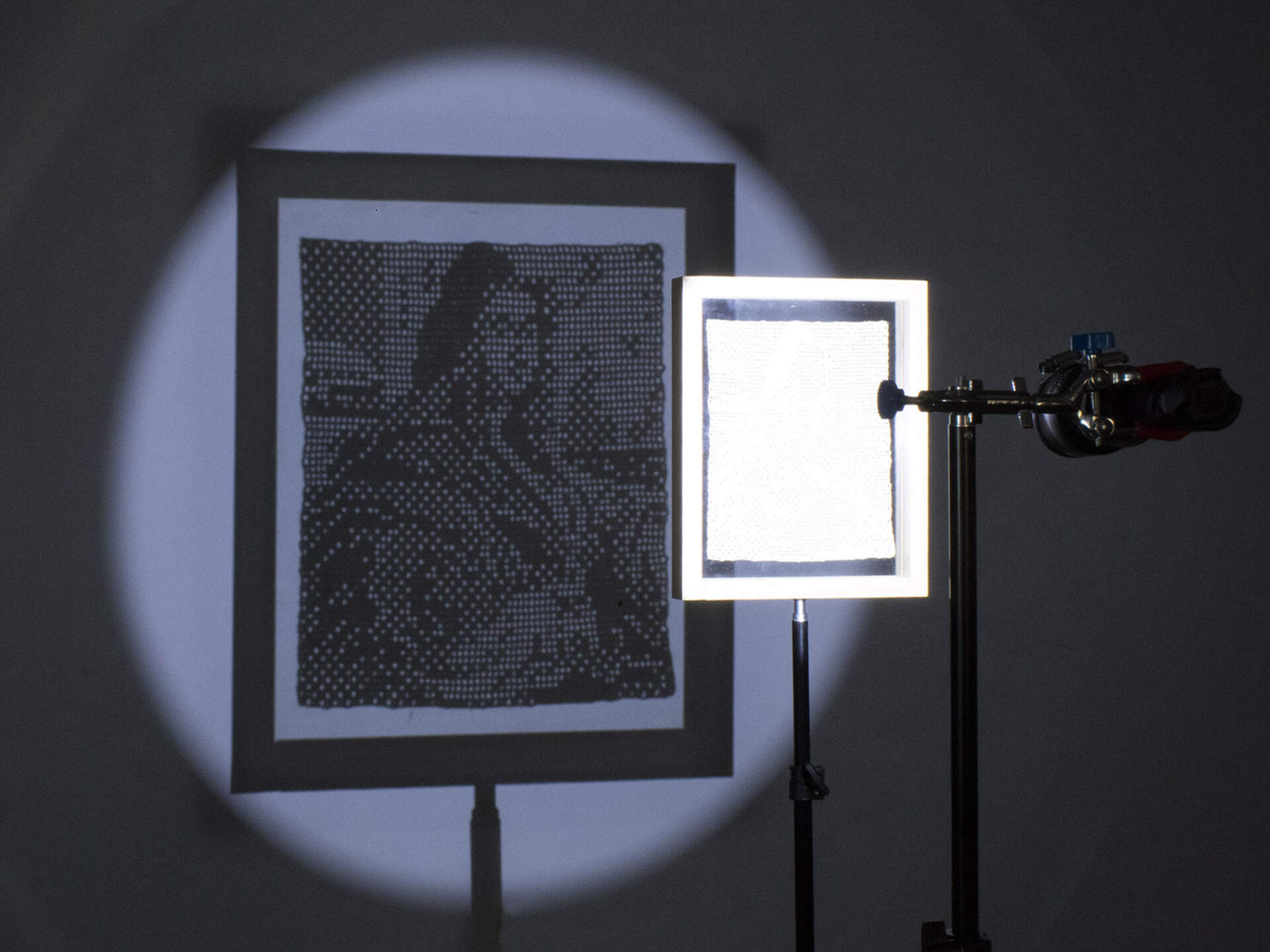
Kurt Treeby, Raphael's Portrait of a Young Man (Looted by the Nazis), 2019; cotton crochet thread in glass and oak frame, flashlight, light stands, dimensions variable; Courtesy of the artist
Kurt Treeby: Loss Projection
Past
Dec 10, 2021 - May 1, 2022
As the Nazis stormed across Europe during World War II, they looted thousands of works of art from museums and private collections. Among the plunder was a painting by Raphael that is still missing. In 1958, a fire ravished the galleries at New York’s Museum of Modern Art. Waterlilies, a masterwork by Claude Monet, was destroyed in the conflagration. In 1991, a pair of brazen thieves robbed Boston’s Isabella Stewart Gardner Museum of some of its greatest treasures. Although as a culture we think of art as timeless, these losses lay bare the difference between our perception of great art as permanent and everlasting, and the physical reality of a fragile physical object.
In most cases these works are lost forever, although they live on in photographs and personal memories, inhabiting a peculiar space between existence and non-existence. By reproducing these works using fiber art techniques, Kurt Treeby pays tribute to them. The pieces are made using filet crochet. This is a technique that uses a simple binary system of open and closed squares. He states:
I also acknowledge that crochet cannot reproduce them exactly as they were. The process is inherently low-res, leading to a work that may be recognizably based on a famous painting but will never be mistaken for the original.
Presenting the work as shadowy projections further reinforces this image breakdown and turns each work into something intangible and ephemeral. The pieces are incomplete and imperfect like our own memories of the works themselves.